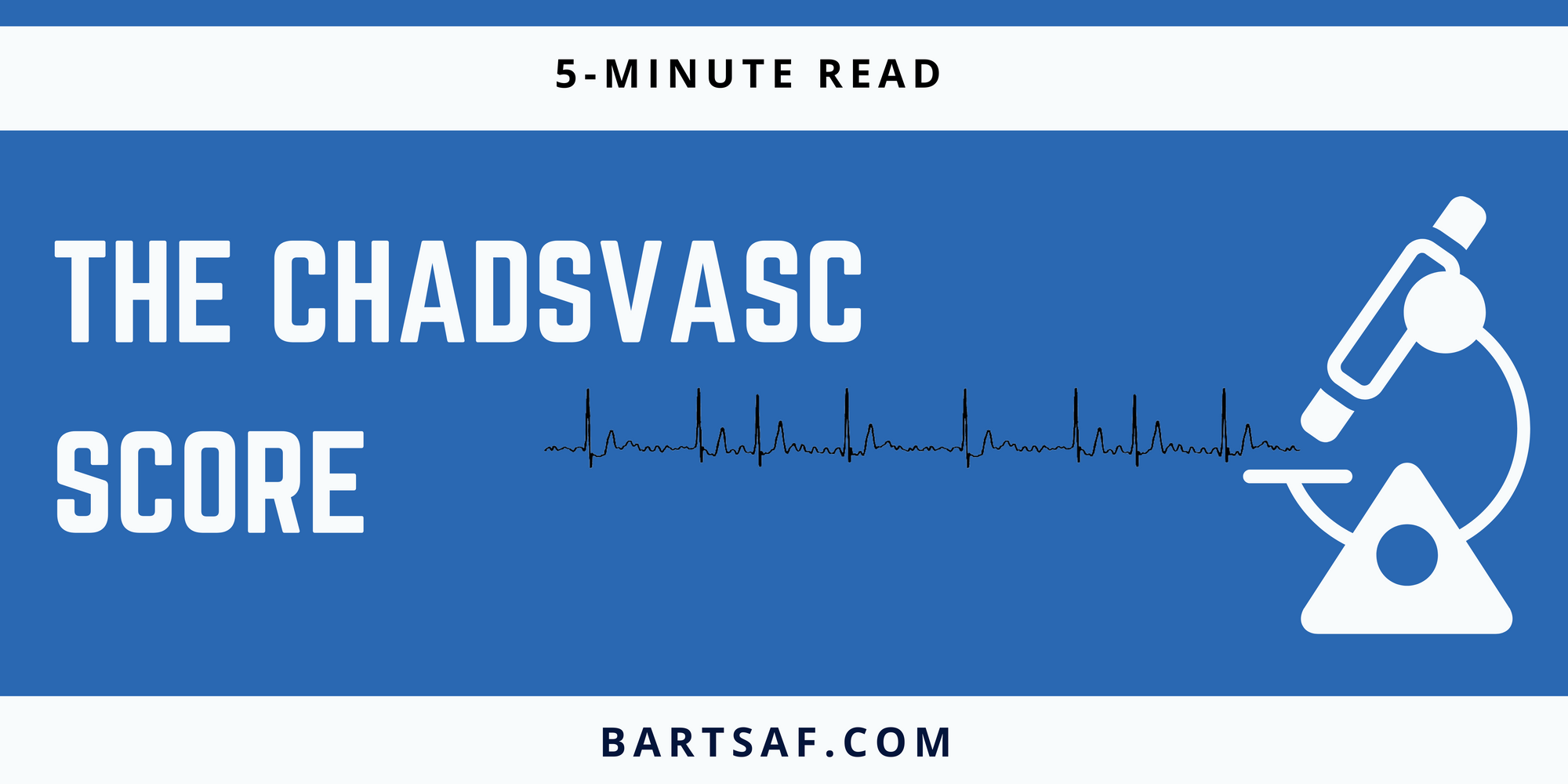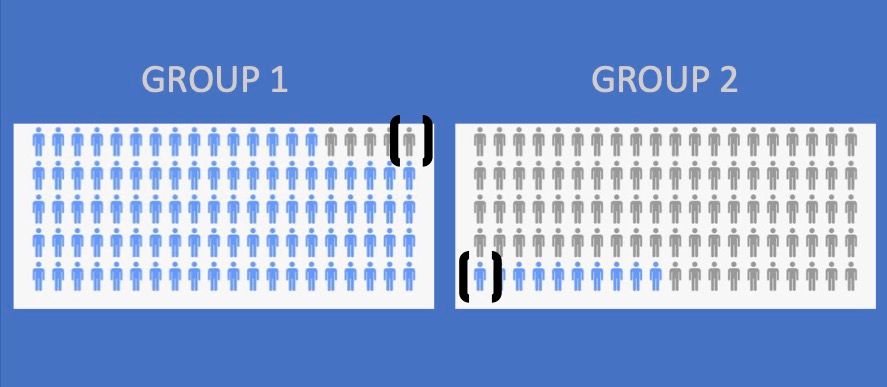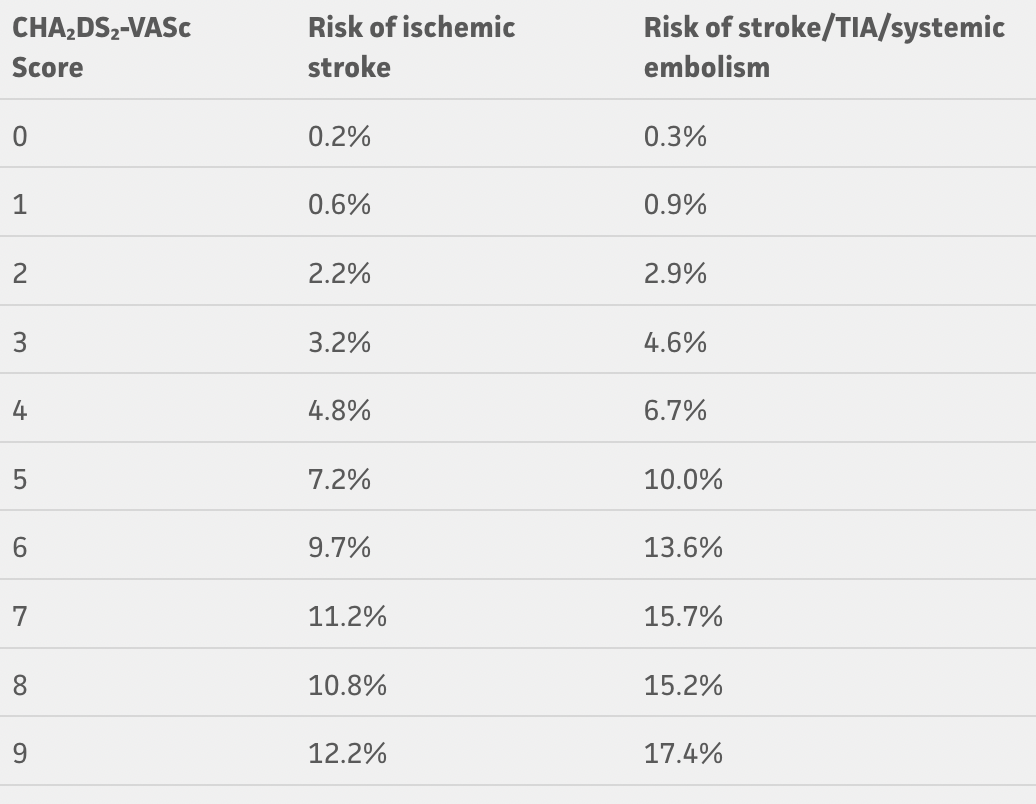The CHADSVASc score

"Just because I have AF, does that mean I'm at an increased risk of stroke?"
The short answer is yes, but like many things in medicine, there's much more to it than AF=stroke. So let's dive into the grey...
AF is a risk factor for stroke. We've spoken about the suggested mechanisms behind the relationship in detail before. The fundamental concept to grasp is that it's all about probabilities. Which means if you're high risk, you're have a higher likelihood of having a stroke in the next 5 years than someone who is low risk. But, the high risk person may never have a stroke in their life and the low risk person may have one tomorrow. Take a look at the picture below. If the grey figures in the group are the patients who have a stroke in the next 10 years, I would much rather be in Group 1. However, on an individual level, there will be low-risk people who have a stroke and high-risk people who won't and it's near impossible to predict which in the group will suffer the unlikely outcome.

If we can identify the factors that make people high-risk and use these to place people in a risk category- this is called stratification. We can then manage an individual based on their risk level.
So you can have patients with AF who are low risk, who don't need any additional medicines, whereas the high risk patients should be strongly considered for blood thinners to reduce their risk. (Note: you may be thinking why not just give everyone blood thinners- this is because of the slight increase in risk of bleeding and so we would only give them to patients where the benefits outweighed the risks.
Now, going back to the title of this post- the CHADSVASc score is a mnemonic to remember risk factors to stratify patients with AF into low or high risk. You tally up a patients score up to a maximum of 9, with a higher score reflecting higher risk There are plenty of online calculators you can use to work out your individual risk.

0 is considered low-risk for men and 1 for women. These thresholds were set following an observational study of almost 200,000 patients with AF. The investigators applied this score to these patients and found their annual stroke risk tended to rise with their score and they reported the event rates as below.

However, it's important to note, this short list of risk factors cannot encompass all the individual nuances and there are factors that will increase your stroke risk or bleeding risk outside of these 7 factors that would alter your individual benefit:risk ratio. The CHADSVASc score is only a guide and it's important you have a detailed consultation to discuss your individual pros and cons with your healthcare provider to determine what your individual risk is and thus whether you should take a blood thinner or not.
Press 'Subscribe' to get weekly AF updates like this directly to your inbox!
Leif Friberg, Mårten Rosenqvist, Gregory Y.H. Lip, Evaluation of risk stratification schemes for ischaemic stroke and bleeding in 182 678 patients with atrial fibrillation: the Swedish Atrial Fibrillation cohort study, European Heart Journal, Volume 33, Issue 12, June 2012, Pages 1500–1510, https://doi.org/10.1093/eurheartj/ehr488
